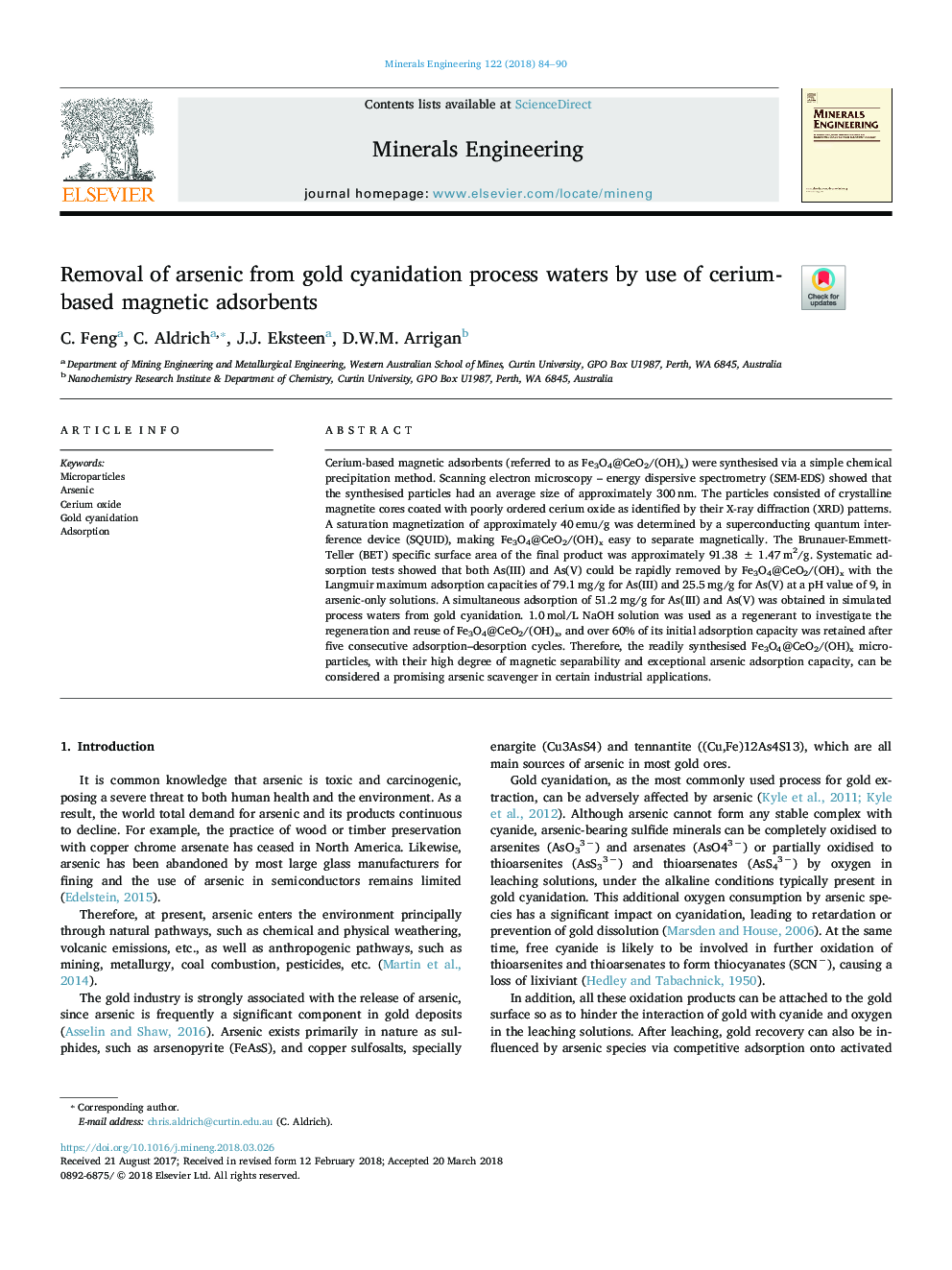| Article ID | Journal | Published Year | Pages | File Type |
|---|---|---|---|---|
| 6672304 | Minerals Engineering | 2018 | 7 Pages |
Abstract
Cerium-based magnetic adsorbents (referred to as Fe3O4@CeO2/(OH)x) were synthesised via a simple chemical precipitation method. Scanning electron microscopy - energy dispersive spectrometry (SEM-EDS) showed that the synthesised particles had an average size of approximately 300â¯nm. The particles consisted of crystalline magnetite cores coated with poorly ordered cerium oxide as identified by their X-ray diffraction (XRD) patterns. A saturation magnetization of approximately 40â¯emu/g was determined by a superconducting quantum interference device (SQUID), making Fe3O4@CeO2/(OH)x easy to separate magnetically. The Brunauer-Emmett-Teller (BET) specific surface area of the final product was approximately 91.38â¯Â±â¯1.47â¯m2/g. Systematic adsorption tests showed that both As(III) and As(V) could be rapidly removed by Fe3O4@CeO2/(OH)x with the Langmuir maximum adsorption capacities of 79.1â¯mg/g for As(III) and 25.5â¯mg/g for As(V) at a pH value of 9, in arsenic-only solutions. A simultaneous adsorption of 51.2â¯mg/g for As(III) and As(V) was obtained in simulated process waters from gold cyanidation. 1.0â¯mol/L NaOH solution was used as a regenerant to investigate the regeneration and reuse of Fe3O4@CeO2/(OH)x, and over 60% of its initial adsorption capacity was retained after five consecutive adsorption-desorption cycles. Therefore, the readily synthesised Fe3O4@CeO2/(OH)x microparticles, with their high degree of magnetic separability and exceptional arsenic adsorption capacity, can be considered a promising arsenic scavenger in certain industrial applications.
Related Topics
Physical Sciences and Engineering
Chemical Engineering
Chemical Engineering (General)
Authors
C. Feng, C. Aldrich, J.J. Eksteen, D.W.M. Arrigan,
